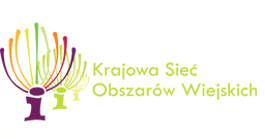ENDR Newsletter June 2018
NEWS
Innovative solutions for rural services
Twelve participatory initiatives that have successfully enhanced rural services are profiled in the latest edition of the EAFRD Projects Brochure on ‘Digital and Social Innovation in Rural Services’.
The projects provide inspiring examples of how rural communities can respond to the challenges they face, using support under the European Agricultural Fund for Rural Development (EAFRD) or other funding solutions.
The brochure has been informed by the broader ENRD thematic work on ‘Smart Villages’.
For electronic and paper subscriptions to ENRD publications, please email subscribe@enrd.eu.
The fourth meeting of the ENRD Thematic Group (TG) on Smart Villages (12 June 2018 – Brussels, Belgium) discussed how the TG could support the development and take-up of smart strategies and ideas in Europe’s rural areas.
The TG is contributing orientations for policy implementers on how to develop smart village strategies, as well as showcasing examples of using different instruments and funds and of joined-up governance systems.
Find out more in the latest editions of the EU Rural Review and EAFRD Projects Brochure.
An ENRD Seminar (14 June 2018 – Brussels, Belgium) brought together a wide range of stakeholders to discuss how the Rural Development Programmes (RDPs) can best support the sustainable management of water and soils.
The event showcased a variety of projects across Europe that are successfully addressing resource efficiency objectives and explored the bottlenecks and enabling factors related to the implementation of RDP's in this area. In addition, the seminar overviewed the findings and recommendations of the ENRD Thematic Group on this topic.
Find out more about sustainable water and soil management practices in the dedicated editions of the EU Rural Review 25 and EAFRD Projects Brochure.
The European Commission published on 1 June 2018 its legislative proposals for modernising and simplifying the Common Agricultural Policy (CAP) for the 2021-2027 programming period.
The new CAP will be based on nine objectives reflecting the economic, environmental and social importance of the policy and will prioritise results and performance, rather than rules and compliance. It will introduce a tailor-made approach, giving greater freedom to EU Member States to decide how best to meet the common objectives while at the same time providing for their own specific needs.
According to the Commission’s proposal for the overall EU budget of 2 May 2018, the CAP would be allocated € 365 billion, including € 265.2 bn for direct payments, € 20 bn for market support measures, and € 78.8 bn for rural development.
The 11th NRNs’ Meeting and communication workshop (31 May-1 June 2018 – Prague, Czech Republic) discussed ways of reinforcing networking opportunities and improving communication activities at both the national (NRN) and European (ENRD) levels.
Participants exchanged on current networking practices in areas such as thematic work and LEADER/CLLD, as well as on how these can be improved in the future.
The communications workshop saw practical, interactive exercises and discussions on storytelling, writing for the web and social media, and shared a wealth of good communication practices – ranging from targeted events to innovative online tools.
A recent ENRD workshop (21-22 June 2018 – Sofia, Bulgaria) explored the implementation of the 2014-2020 Rural Development Programmes (RDPs) and preparations for the upcoming performance review of ESIF programmes in 2019.
The event featured presentations, group discussions and a panel session to exchange experience and practical examples on RDP implementation blockages and successful strategies and tools for overcoming them, and on preparations by Managing Authorities/Paying Agencies for the performance review exercise for RDPs. It concluded with an exchange on what can be improved in the future, post 2020.
A new handbook for Local Action Groups (LAGs) funded under one or several of the EU’s Structural and Investment Funds has recently been launched by the FARNET Network support unit. It provides easy-to-use evaluation tools, methods and practical examples.
The handbook aims to help LAGs optimise the use of public funding and improve the application of CLLD on the ground and is available in English, French, German, Italian, Spanish and Polish.
Find out about the European Commission’s action plan to roll out broadband throughout Europe’s rural areas – read the perspective of Jan Dröge, team-leader of the Broadband Competence Offices Network Support Facility.
The plan aims to boost rural broadband investments through actions such as developing a common methodology for planning, reporting, and monitoring of investments, broadband missions to rural areas, a ‘rural proof test’, and designing a framework to help implement investments.
The 9th meeting of the of the Rural Networks’ Steering Group (25 May 2018 – Brussels, Belgium) discussed ideas for the 2018-2019 ENRD activities and reflected on the outcomes of the 11th OECD Rural Development Conference of 9-12 April 2018.
Steering Group members heard updates from the ENRD Contact Point and Evaluation Helpdesk, and EIP-AGRI Service Point and exchanged on recent and upcoming network activities and on ideas for future work.
A new financing initiative launched by the European Investment Bank (EIB) aims to unlock around € 1 billion of investment in the EU’s agriculture and bioeconomy sectors, targeting farmers and small and medium enterprises.
Funding will cover the value chains of food production and processing, and material and energy from renewable biological resources. It will be guaranteed under the European Fund for Strategic Investments (EFSI) which was extended in early 2018 to include a specific sectorial focus on sustainable agriculture and the wider bioeconomy.
A recent fi-compass event (19 June 2018 – Brussels, Belgium) presented the findings of a fi-compass study on financial instruments for financing rural, agricultural and forestry infrastructure and explored the potential for EAFRD financial instruments to finance rural infrastructure.
The event featured presentations from DG AGRI, the ENRD and the European Investment Bank as well as from Managing Authorities and financial intermediaries. Practical examples of infrastructure financing hold-ups, as well as potential strategies and tools for use of EAFRD financial instruments were discussed.












